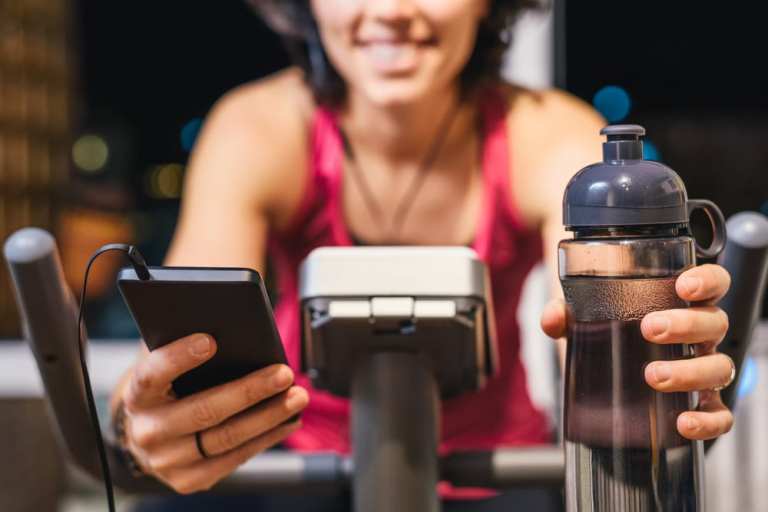Tempo And The Home Fitness Gold Rush

Fitness equipment maker Tempo, whose home workout systems retail for nearly $2,000, has seen its valuation hit $250 million amid a massive surge in interest as the pandemic shut down brick-and-mortar gyms.
The San Francisco company just raised $60 million in venture funding that the firm plans to use to boost production to meet surging demand as consumer fitness relocates from gyms to people’s living rooms.
“COVID changed the landscape,” CEO Moawia Eldeeb told Bloomberg in disclosing the funding round. “I expected we’d be where we are today in five years.”
But Tempo is just the most recent home gym startup to see big interest from investors. Athleisure giant Lululemon announced the acquisition earlier this month of home exercise startup Mirror for an impressive $500 million. And connected bike maker Peloton has seen its stock soar in 2020 as it reported a 66 percent year-over-year spike in first-quarter sales pushed by the pandemic’s early days.
Even smaller digital fitness startups are riding the wave for investor enthusiasm. For example, Neou, an on-demand live-streaming platform for exercise trainers, raised $5 million from investors in June to help build what CEO Nathan Forster called a new centralized platform for streamed fitness.
“We’re the Netflix of fitness based on our user experience and affordability, and an Amazon to content creators, in that we are a marketplace that provides trainers with a way to digitally scale their businesses,” Forster said.
That’s a big claim for a small firm to make in a field that’s rapidly becoming crowded as it looks increasingly likely that consumers won’t be returning to gyms anytime soon.
Kirsten Potenza, CEO and founder of Pound Rockout Workout, a fitness firm, told PYMNTS that anyone who wants to be in the business has to think about ways to do things digitally for now. Potenza said that was a difficult conclusion for her company, which had been firmly “anti-virtual” in the pre-pandemic world.
She said working out had been about community, and her firm believed a physical space was the best place to build that. But Potenza said she changed her mind in recent months as Pound helped its trainers create virtual alternatives to physical classes.
“We’ve seen that it actually allows our community to grow and connect in a way that we could have never imagined before,” she said. “We’ve been able to connect instructors and participants in different global markets around the world. It’s been an amazing opportunity.”
Meanwhile, traditional brick-and-mortar gyms have found a pretty rocky path to reopening their doors. Those that have done so are often operating by appointment only, or with restrictions on what equipment can be used. Many are also requiring fitness enthusiasts to exercise while wearing face coverings.
But even with such safety measures in place, operators are struggling with consumers’ waning enthusiasm for getting back to gyms, especially after COVID-19 cases increased as states started easing quarantine rules. Reports of potential coronavirus outbreaks centered around gyms aren’t helping.
Besides, PYMNTS consumer surveys have found that many Americans are content to stay hunkered down in their homes. That means the world of consumer fitness has had to change — and in many cases move to digital channels to survive and stay relevant in consumers’ lives.
And that has seen some large fitness chains fall into trouble. For example, Gold’s Gym International Inc. filed for Chapter 11 in May, citing financial interruptions caused by the health crisis. And rival chain 24 Hour Fitness announced in June that it had filed for Chapter 11 as well, noting that it would shutter more than 100 locations and that it was “implementing a financial restructuring.”
Ryon Packer, chief product officer at ABC Financial, a fitness industry-focused payment and club membership software provider, told PYMNTS that for many of his firm’s clients, “their point-of-sale transactions have just gone to zero. The industry is just shut down.”
He said more than 95 percent of the sector “is literally closed and has stopped billing.”
“While gyms may feel the strain of sudden declines in revenue, they might be able to create new business strengths with innovative approaches and help from payment partners,” Packer said. “Remote or in-home workout content streaming is not a novel concept for those that run clubs, [but] closures have sped up the adoption of these solutions.”
Of course, the challenge for traditional players that have focused their offerings on physical locations is that they’re taking on dedicated digital specialists. In many cases, the startups have seen the pandemic not as a crisis, but as a period of major growth and investment.